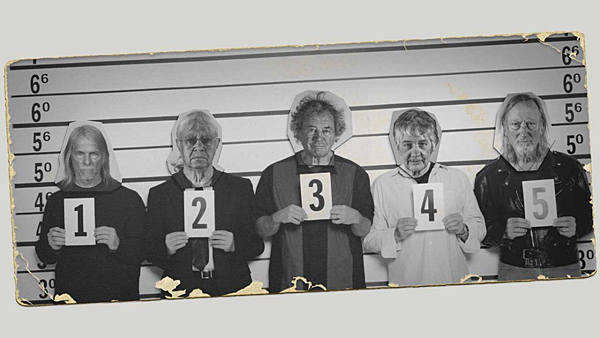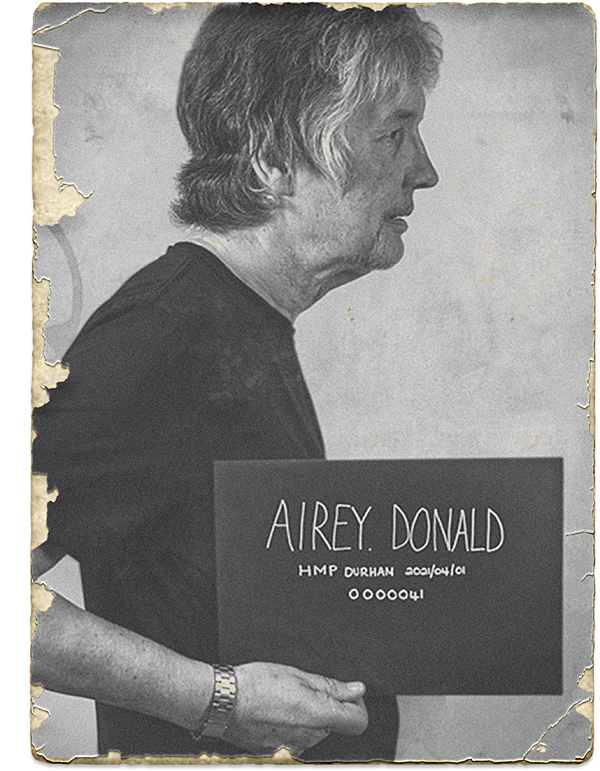Keyboardist Don Airey on Why Deep Purple Turned to a Recorded Life of Crime Page 2
Airey: Yeah, it was pointed out once that "Pictures of Home" [from March 1972's Machine Head] is the only track in the Deep Purple rock canon that features a solo from everybody in the band (laughs), so we're used to doing it that way.
Mettler: Well, you can't do much of anything without the right equipment, so let's go over some of the gear you used on Crime. That Hammond organ you mentioned earlier is the A100, right?
Airey: Yeah, that's right, it's the A100. It's very old—it's the 1962 one, and it's just the one that lives in my studio. I think it's probably my favorite Hammond of the five I own.
Mettler: And that one never travels, right? That one always stays at home?
Airey: It just stays where it is, you know? It's got the original Leslie [speaker] within it. It's a Leslie 122, and both of them are hell to move, so they have to stay in one place! (laughs heartily) I also had a spare Aston microphone on the top, and one on the bottom. I had a Marshall Heritage amp and I had a direct input as well, so that added some beef to the sound.

Mettler: Is that different from how you miked the grand piano you were using?
Airey: I was using my six-foot-six Blüthner grand, which is even older than my Hammond. In fact, it's 66 years older than my Hammond, as it's from 1896, in the century before last. Luckily, before lockdown, I'd had it tuned, but I really hadn't a clear idea of how to mike it. But as it was being recorded, all the mikes were quite far back from the piano. I got two AKG C 414s and had them six feet back, and three feet apart. And, to my amazement, it sounded really great—if I remembered to turn the volume down on the recording equipment, that is! (laughs heartily)
Mettler: Well, volume is another member of this band sometimes. I also like what you're doing in [The Yardbirds'] "Shapes of Things," so I want to know what you're playing there—because to me, your solo felt like a George Duke kind of moment, in a way.
Airey: Oh yeah—it's a Hammond solo, but with a sitar sound. I don't know why I did that. It just seemed to need an Eastern feel to it.
Mettler: It adds an extra flavor to it, kind of like what George Duke did when he played with [Frank] Zappa in the mid-seventies on albums like [September 1973's] Over-Nite Sensation. He had a similar effect on one of the solos he took on, if I remember correctly, "Fifty-Fifty". . .
Airey: Oh yeah, yeah. That's one of his I remember!
Mettler: Another moment on Crime with a clever nod from you came at the end of [Johnny Rivers' version of Huey "Piano" Smith's] "Rockin' Pneumonia and The Boogie Woogie Flu" where there's like a little taste of the "Smoke on the Water" riff for just like a second or two there. Am I right?
Airey: (laughs heartily) I put that in there really just to give Bob Ezrin a laugh. I thought, "Poor man—he has to put all this together!" I thought he'd come back to me and say (adopts serious tone), "What are you doing? What is the purpose of that?" But he never came back to me, so we just kept it in.
Mettler: It's a nice little Easter egg, because it rolls by and you're like, "Did I hear that? Yeah, I did hear that." (Airey chuckles again) I also have to ask you, in the "7 and 7 Is" video, the gear we see you playing there is what? It's certainly not the Hammond A100.
Airey: I didn't play Hammond on [Love's] "7 and 7 Is." In the video, I'm playing around on a vintage Fender piano, but the actual piano I used was a Wurlitzer C 142, and it's got the most beautiful sound. Ian McLagan used it with The Faces.

Mettler: That's what I thought, because it was on an album or two back where you had this Wurlitzer/Doors kind of thing going on. It was, what's that song called—I think it was "Blood From a Stone" [from April 2013's Now What?!].
Airey: Oh, that's right. I really enjoyed doing that track. Wow, you're the man with all the titles! (chuckles)
Mettler: Thanks. It's a blessing—and it's sometimes a curse too! (both laugh) To me, it's like reading the box scores and then finding the links to everything. And I want to put it all together, because you kind of encapsulate the history of rock on this Crime album. But I'm wondering where Rachmaninoff and Sonata No. 2 comes into play here, because I know that was an important piece for you growing up.
Airey: Yes, the Rachmaninoff Concerto. It was something used on the orchestral tour. And I also put a little bit of Chopin in at the end of [Bob Dylan's 1971 B-side] "Watching the River Flow," right when the song finishes. That's a piano flourish I added during the overdubbing because I thought, "This one kind of reminds me of Chopin"—something I would always play when I was a teenager, and I just did it! But at first, I forgot to turn the machine on! It was another thing I did to amuse Bob, just to have him go, "What the hell is that?" (chuckles) But [Ian] Gillan says it sounds like a river flowing.
Mettler: I totally get that. Finally, because we're at the end of the line here, let's project 50 years into the future. It's 2071, and unless cryogenics works, neither of us will be here. How do you think Deep Purple would be viewed as 50 years from now, when people are listening to music in whatever form they're doing it?
Airey: I think Purple will be viewed as being amongst the triumvirate with [Black] Sabbath and [Led] Zeppelin. I think people would say they were the greatest band at that time. Even though it seems like Zeppelin were, Purple were also just so elastic in that there was nothing they couldn't do. They approached everything in one way, but it just seemed to fit all the time.





























































